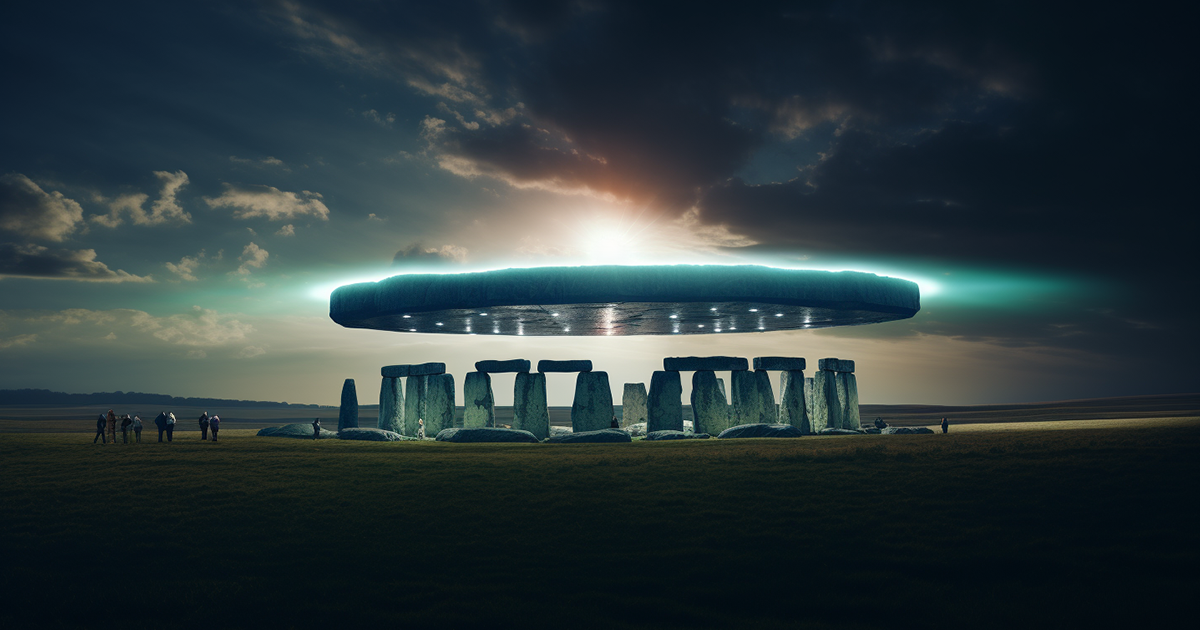The enigmatic enigma that is Stonehenge, a formidable circle of stones, continues to captivate and inspire curious minds worldwide. Situated on Salisbury Plain in England, this ancient marvel serves as a timeless tribute to the intelligence of our forebears.
Throughout history, scholars, archaeologists, and enthusiasts have marveled at the daring construction and pondered the purpose behind it. Instead of entertaining ideas involving extraterrestrial beings or outlandish plots, can we present a more grounded interpretation of Stonehenge’s significance and origin?
When we reflect on the daunting challenge of raising those massive stones, it prompts us to contemplate how ancient societies achieved such a feat devoid of contemporary technology.
These stones, some weighing as much as adult humpback whales, were excavated many miles away and then conveyed to the site. There were no wheels, no large animals for labor, and definitely no simple task for the builders.
One theory proposes the utilization of wooden sleds or rollers fashioned from tree trunks. Nevertheless, the mystery deepens when we consider the blue stones brought from the secluded Preseli Mountains, an astonishing 140 miles away from Stonehenge.

The logistics of transporting these stones across vast distances with rudimentary tools are staggering.
The intricate artistry adds another layer of intricacy. Carving the stones with basic bronze tools, utilizing antler picks and stone implements to sculpt out spaces, was crucial to ensuring the stones remained upright and secure. By employing a tongue-and-groove system commonly found in carpentry, the builders fitted the upright stones with the lintels.
Let’s avoid speculative ideas involving assistance from beings beyond our planet, as some have posited. Instead, let’s delve into a fresh viewpoint on the purpose and construction of Stonehenge that acknowledges the resourcefulness and intellect of our ancient ancestors.
A recent research study by Michael Goff introduces an intriguing hypothesis that shifts the focus away from extraterrestrials and towards a more feasible explanation rooted in human creativity. Goff’s theory delves into the mechanics and purpose of Stonehenge, shedding light on its potential as an ancient timekeeping instrument.
By reconstructing the monument to its original state, Goff unveils that Stonehenge’s outer circle initially included 30 sarson pillars, each paired with connecting lintel stones.
The alignment of these stones with the four cardinal points — north, south, east, and west — is a crucial aspect. Sunlight strategically filters through the stones, creating intricate play of light and shadow.

For years, Stonehenge has served as a marker of the annual solstices, underscoring its connection to the shifting seasons. However, Goff’s insight goes beyond. He suggests that Stonehenge, with additional components like small markers, could have functioned as a daily sundial, tracking the time of day throughout the year.
This innovative concept raises inquiries about how ancient people calibrated their timepiece. Goff speculates that they may have used a specific constellation, the Southern Cross, which would have been prominently visible on the horizon during that period.
Each year, when the Southern Cross aligned perfectly with Stonehenge’s southern opening, they could adjust the markers to calibrate their clock.
Support for Goff’s theory gains further credibility with the unearthing of a dismantled Stone Circle, known as the Wine Mon Stones, in Wales. Researchers discovered a stone fragment at this location that precisely matched one of the stones at Stonehenge, identified as Stone 62.
This revelation suggests that these stones were originally part of a larger circle, potentially providing more evidence for the notion that Stonehenge operated as a sophisticated timekeeping mechanism.
However, despite the compelling nature of these discoveries, it is crucial to remember that correlation does not imply causation. While Goff’s theory aligns well with the available evidence, it’s essential to maintain a prudent skepticism and recognize that the enigma of Stonehenge may always retain some level of mystery.
Video:
As we persist in unraveling the riddles of our past, Stonehenge stands as a symbol of human curiosity and perseverance. While we may not conclusively comprehend why or how it was constructed, we can admire the innovative spirit of our ancestors who left us this lasting monument for contemplation and wonder.
In essence, Stonehenge remains a remarkable testament to the capabilities of ancient civilizations, without the need for alien involvement or extravagant conspiracy theories.
